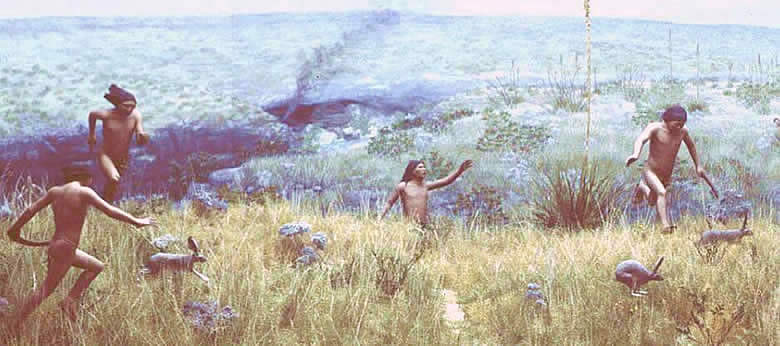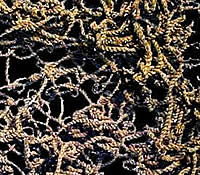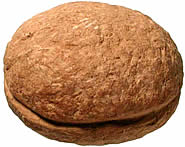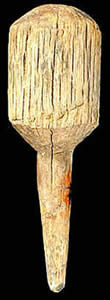Small But Deadly: Traps, Snares, and other Devices


When hunting small animals such as birds, rabbits, and other small game, early hunters used a variety of clever weapons and devices to keep from destroying the feathers, skin, or fur. While arrows or darts would cut into and bloody the pelts, devices such as rabbit sticks, bunts, traps, and snares left the pelts intact. The pelt could be used for making clothing or covering, and the meat for food.
The rabbit stick, or throwing stick, is a simple piece of curved wood about 1½ to 2 feet in length. Although it looks similar to the Australian boomerang, the rabbit stick was not designed to come back after it was thrown. Hunters would hurl the throwing stick at the animal or just use it as a club in order to stun and kill him.

One strategy was to stretch nets across narrow spots, such as a stream valley or gully. Then hunters and their families would walk through the bushes, making noise, to drive rabbits and other small animals toward the net. The hunters would then run to the animals and club them to death with their sticks. This may sound cruel, but it was an effective hunting technique before there were guns or farm-raised animals.

Bolas and bunts were other methods of hunting which used blunt force to capture or kill animals. Two or more bolas, round, grooved stones, were tied to the ends of long cords, whirled repeatedly overhead, and then released to strike the animal or entangle it.

In order not to cut or ruin the animal's fur, hunters sometimes used lightweight wooden bunts instead of sharp stone points on the tip of their arrows and darts.

Traps and snares were used to capture a wide variety of small animals, such as cottontail rabbits, prairie dogs, mice, and rats. Many devices were complex in design, but were made of very simple materials, such as wooden sticks and cords made of fiber. The scissors snare, for example, springs into action when an animal places pressure on a stick, rigged as a trigger. It worked something like this: The hunter places a small piece of food, used as a bait, on a stick near the "V"-shaped opening of the snare. When an animal sticks its head through the opening and takes the food, the trigger is released. This causes the V-shaped "scissors" to snap shut, pinching the small animal in a deadly choke hold.
Another type of trap, the deadfall, was simple but deadly, as its name suggests. When animals were lured into this device, they usually ended up crushed and smashed beneath a heavy rock. To set the trap, hunters placed bait food on a trigger stick underneath a huge rock slab or heavy log, standing on end. When the animal took the bait, it triggered a release mechanism, causing the log or rock slab to crash down upon the prey.

Fish were an important food in prehistoric times, just as they are today. Prehistoric fishermen used hooks made of bone or thorns attached to a line made of fiber or sinew. They also used nets made from plant fibers and traps called weirs, constructed from woven sticks, to catch fish.
People also pounded toxic plants, such as the bark of certain trees, to create a poison that could be thrown in the water to temporarily stun fish. The fish would be netted up and eaten (the poison didn't harm humans).
